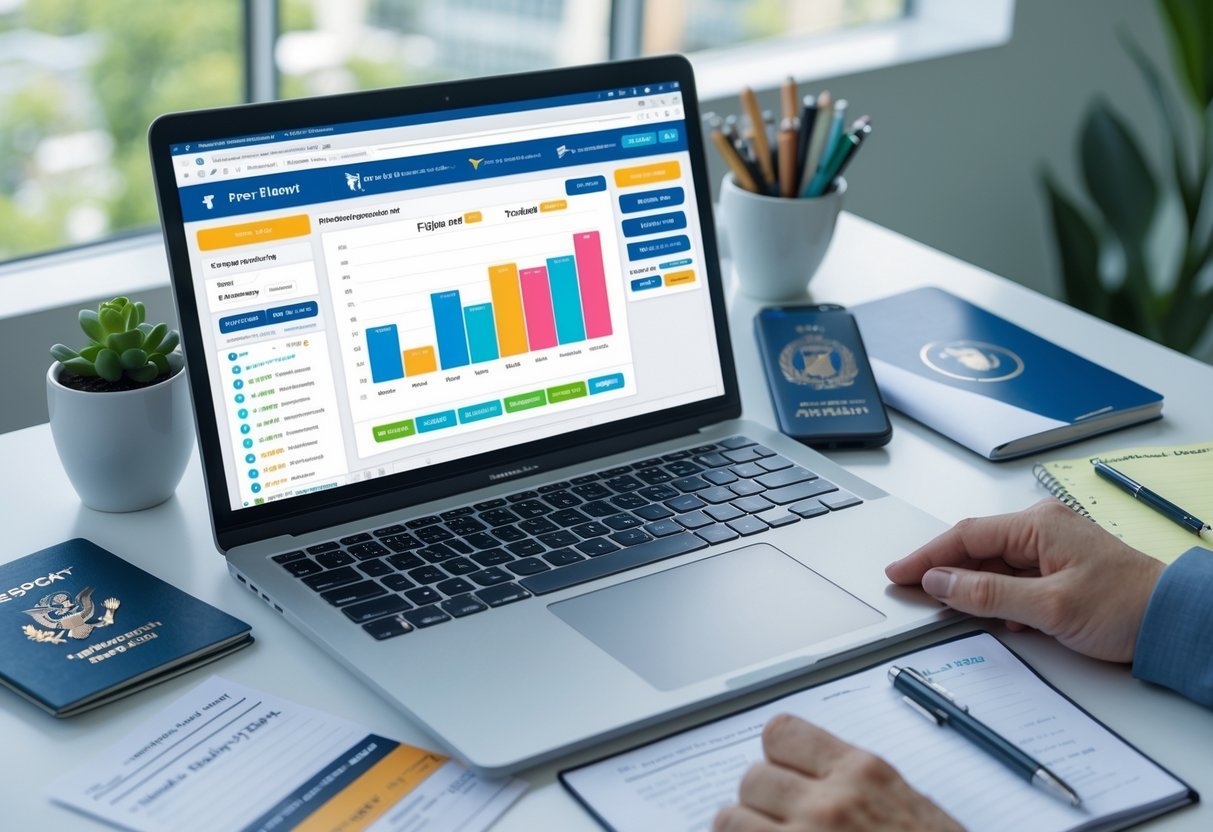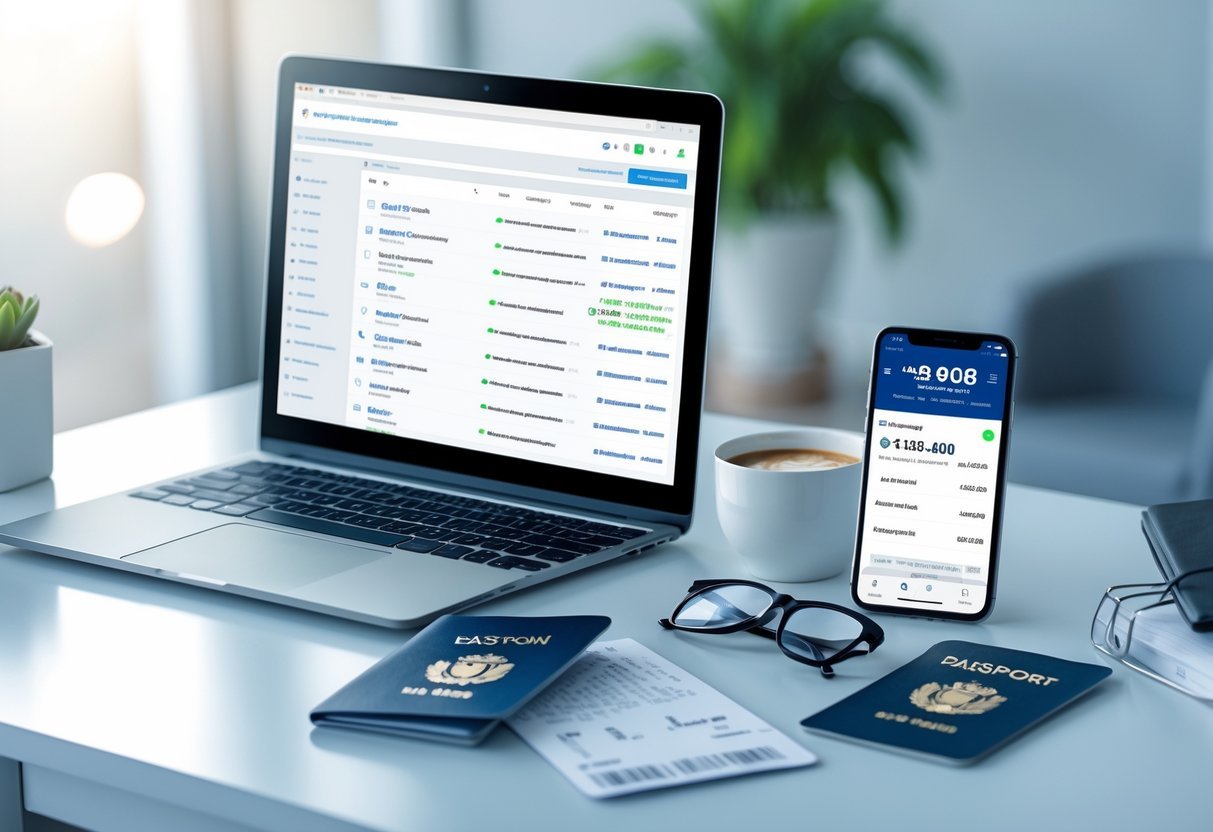Finding cheap flights is all about knowing when and where to look. The best time to book your flight is usually about 6 to 8 weeks before your travel date, but using smart tools can help you snag even better deals. Websites like kiwi.com and other flight search engines use special algorithms to find prices you might miss with regular searches.

You can save money by being flexible with your travel dates and airports. Using flight alerts and comparing prices over several days can reveal hidden discounts. Tools and hacks make it easier to book at just the right moment, so you don’t pay more than you need to.
Mastering the Best Time to Book Cheap Flights

Knowing the right time to book your flight can save you a lot of money. You need to understand when prices drop, how holidays affect rates, and how to watch price changes over time.
When Flights Are Usually Cheapest
Flights are often cheapest 6 to 8 weeks before your departure. Booking too early or last minute usually costs more. Domestic flights tend to be cheaper around 1 to 3 months in advance, while international flights might require booking 2 to 6 months ahead.
Mid-week bookings, especially on Tuesdays and Wednesdays, can also lead to lower prices. Flying on less popular days like Tuesdays or Wednesdays is often cheaper than weekends. Red-eye or early morning flights sometimes offer the best deals.
Using tools like Kiwi.com can help you spot these low-price windows by comparing many options quickly.
How Seasonality and Holidays Affect Prices
Flight prices rise during busy travel seasons like summer, winter holidays, and spring break. These periods mean more travelers, so airlines increase rates.
Holidays such as Christmas, New Year, and Thanksgiving usually have the highest prices. Avoid booking flights that land or depart near these holidays if you want to save.
Off-peak seasons, such as late fall or early spring, generally have lower prices. You can save money by planning your trip during these quieter times. Also, some destinations have specific low seasons—finding out when these are can help you book cheaper flights.
Tracking Price Trends Over Time
Tracking prices over weeks or months helps you know when to buy. Use apps or websites that allow you to set alerts for price drops.
Look for stable or declining prices. If prices jump suddenly, it might be a sign to buy before they go higher. Save historical data or use price history charts provided by sites like Kiwi.com to spot trends.
Set reminders to check prices regularly. This prevents missing good deals and stops you from overpaying due to rushing your booking.
Top Flight Booking Hacks and Insider Strategies

Knowing when and where to look can save you a lot of money on flights. Using flexible travel options, keeping track of price changes, and considering unusual routes can help you find deals others miss.
Utilizing Flexible Dates and Destinations
Being flexible with your dates lets you spot cheaper flights. Many websites and apps, like Kiwi.com, allow you to search for flights within a range of days.
Try shifting your trip by just a few days. Flights on weekdays, especially Tuesday or Wednesday, often cost less than weekend flights.
Also, if your destination is open, use the “Everywhere” or “Any Destination” option to find the cheapest places to fly. This can lead you to unexpected bargains.
Setting Fare Alerts and Notifications
Setting up fare alerts helps you monitor prices without checking constantly. Most flight search engines let you enter your trip details, then send you an email or app notification when prices drop.
Use tools like Google Flights or Skyscanner for this. Make sure to set alerts for multiple airports near your departure and arrival cities to catch all possible deals.
Check your notifications regularly and be ready to book quickly when you see a low price. Deals can disappear fast.
Leveraging Layovers and Multi-City Routes
Adding layovers or choosing multi-city flights can lower your costs. Direct flights are usually more convenient, but stops can cut prices significantly.
Kiwi.com is great for exploring these options because it combines flights from different airlines into one trip. You might find a cheaper flight by booking two separate legs instead of one nonstop.
Consider flights with longer layovers if you don’t mind a bit more travel time. Sometimes, staying in a layover city for a day or two can even turn into a mini-trip.
Essential Tools: How kiwi.com and Others Help You Save

Using the right flight search tools can make a big difference in finding cheaper tickets. Some platforms offer unique features that others don’t, and combining different tools can help you spot the best deals faster.
Understanding kiwi.com’s Unique Features
Kiwi.com stands out because it mixes flights from different airlines, including carriers that don’t usually work together. This means you can find cheaper routes by combining flights in ways other sites don’t show.
It also lets you book multi-city trips and shows “hidden city” ticket options, where you get off at a layover point instead of the final destination, sometimes saving money.
Kiwi.com has a guarantee that covers missed connections if separate flights don’t line up. This backup reduces risk when booking unique combinations but always check the details to understand what’s covered.
Comparing Aggregators and Flight Search Engines
Flight aggregators like Skyscanner, Google Flights, and Momondo scan many airlines and travel sites to show you multiple prices. Some focus only on direct flights, while others include budget airlines.
Google Flights is good for quick searches and offers calendar views that show price trends over time. Skyscanner has flexible search options by date and destination and often finds budget airlines.
Momondo can show you the cheapest, quickest, or best combinations of flights. However, none of these sites includes the same “virtual connections” kiwi.com does, so checking more than one site can pay off.
Combining Tools for Maximum Savings
To save the most, use multiple sites to compare prices and features. Start with Google Flights or Skyscanner for a broad view of prices and dates.
Then, check kiwi.com to see if they have unique combinations that could lower your cost. Use Momondo to compare and confirm prices and routes.
You can also sign up for alerts on these platforms to track price changes. This approach helps you know when prices drop or rise so you can book at the right time.
Booking Smart: Additional Tips for Securing Low Airfares

Knowing when to search, how to clear your browsing history, and where to book can save you money on flights. These tips help you avoid common price tricks and find the best deals faster.
Choosing the Right Time and Day to Book
Booking flights during certain times can lower costs. Studies show Tuesday and Wednesday are often the best days to buy tickets. Airlines release deals early in the week, so prices are usually lower then.
The time of day matters too. Try searching early in the morning or late at night. Fewer people are shopping, so prices can be cheaper.
Also, book flights 6 to 8 weeks before your trip. This window balances availability and price. Booking too early or last-minute often means paying more.
Clearing Cookies and Searching Privately
Websites track your searches using cookies. If you check the same flight multiple times, prices may seem to rise. Clearing cookies or using private browsing helps avoid this.
When you search in a private or incognito window, your browser ignores past searches. This means airlines won’t know you’re interested, so the price stays stable.
Regularly clear cookies on your browser if you shop for flights often. This simple step helps you avoid price hikes caused by repeated searches.
Booking Directly with Airlines Versus Third Parties
Booking direct with airlines can give you better customer service. Airlines may offer free changes or cancellations that third-party sites don’t.
However, third-party sites like Kiwi.com or Expedia can offer different routes or better prices by combining flights.
Use third-party sites to compare prices, but always check the airline’s official site before booking. This way, you ensure you get the best deal and protection in case of problems.
Final Thoughts: Your Cheap Flight Playbook
Let’s be real—finding the absolute cheapest flight isn’t always easy, but it’s definitely possible if you’re willing to put in a little legwork and stay flexible. Mix and match your tools, keep an open mind about dates and destinations, and don’t be afraid to try those weird routes or long layovers.
Sometimes you’ll get lucky, sometimes you’ll need to wait for the right alert, and sometimes you just have to trust your gut. Either way, with these hacks and a bit of patience, your next adventure doesn’t have to break the bank. Happy travels—and may your inbox be filled with those “price dropped!” notifications.




